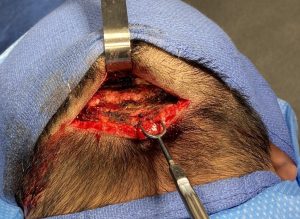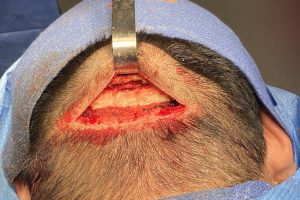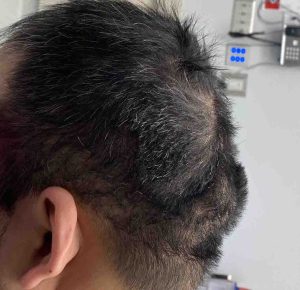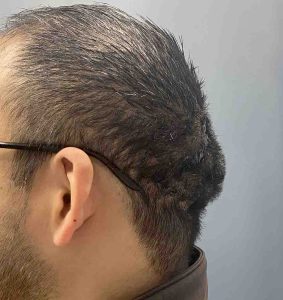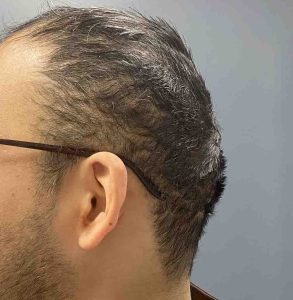Background: The back of the head is prone to variety of aesthetic shape deformations, some of them flattening and others of a protrusive nature. For the protrusions there are some well known occipital bone-based ones including knobs and buns. These are circular enlargements that have a midline origin to them. They are essentially enlargements of naturally existing smaller occipital features that have become more prominent.
A non-circular occipital protrusion that is less well known is a nuchal ridge prominence. The back of the head has four distinct curved lines on the external surface of the occipital bone. The highest or supreme nuchal line begins about where the occipital skull begins to curve inward and extends from midline to the lambdoid sutures on either side, curving slightly downward as it moves laterally. This line serves as the attachment area of numerous of the neck muscles including the trapezius, splenius capitus and the occipitofrontalis. This nuchal line can become enlarged creating a horizontal wing-shaped ridge that sticks out.
While occipital knobs and buns can have extra scalp overlying them the nuchal ridge prominence can have scalp rolls associated with it. This is undoubtably due to its horizontal shape and the naturally thicker scalp on the back of the head where it joins with the upper neck. Such scalp rolls contribute to the protrusion and must be managed as well as the nuchal ridge protrusion for the optimal reduction of this type of back of head prominence.
Case Study: This male desired to have the prominence on the back of his head reduced. In profile the bottom part of the back of his head stuck out further than the contour above it. The flatness of the back of his head make the lower protrusion more evident. Close inspection revealed that the scalp over the prominence had a double roll of excess scalp. At the bottom of the lower scalp roll it was tightly adherent to the bottom edge of the protruding bone.

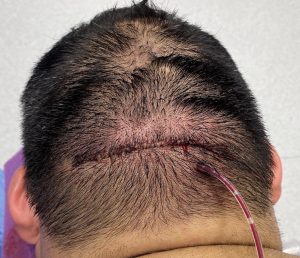
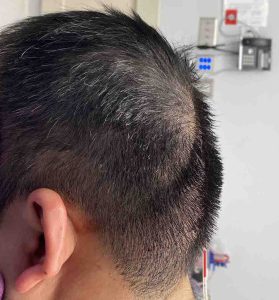

The enlarged nuchal ridge often has overlying scalp rolls because of its horizontal elevation along the bottom of the visible skull. This requires a longer than usual scalp incision since a scalp roll must be excised as well as the bone reduced. In the double scalp roll the lower roll is excised which allows the upper scalp roll to be unfurled and flattened during the closure.
Key Points:
1) A unique back of the head protrusion is a nuchal ridge enlargement with double overlying scalp rolls.
2) Unlike occipital knobs and bun the enlarged nuchal line is a horizontal bony protrusion and not a circular one.
3) When more than one overlying scalp roll is present at least one of the rolls must be excised with the underlying bone reduction to optimize contour flattening on the back of the head.
Dr. Barry Eppley
World-Renowned Plastic Surgeon



